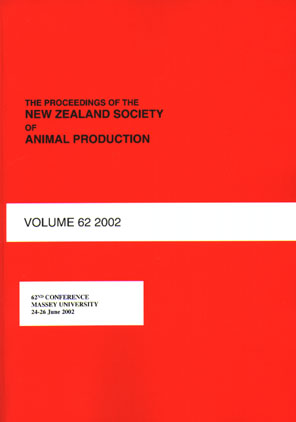Abstract
Hand-reared sambar and red deer (3 hinds and 5 stags/species) were confined indoors in individual pens and fed a pelleted diet ad libitum, to study seasonal effects upon voluntary feed intake (VFI) and body growth. Mean age at the start of the experiment was 5 months for sambar and 7 months for red deer. Red deer of both sexes showed maximum VFI and liveweight gain (LWG) in summer and minimum values in winter. Sambar of both sexes also showed seasonal cycles in VFI and LWG, but with maximum values in autumn and minimum values in spring, and with the amplitude of the cycles being much less than for red deer. Over a complete 12 month period (7-19 months of age), total LWG was similar in sambar and red deer, but total VFI was lower for sambar (p<0.01) and efficiency of food conversion (kgDM/kgLWG) more efficient for sambar than for red deer (p<0.05). When energy requirements were calculated, the amount of metabolisable energy (ME) required for both maintenance and gain were lower for sambar than for red deer.
Proceedings of the New Zealand Society of Animal Production, Volume 54, , 63-66, 1994
| Download Full PDF | BibTEX Citation | Endnote Citation | Search the Proceedings |

This work is licensed under a Creative Commons Attribution-NonCommercial-NoDerivatives 4.0 International License.

